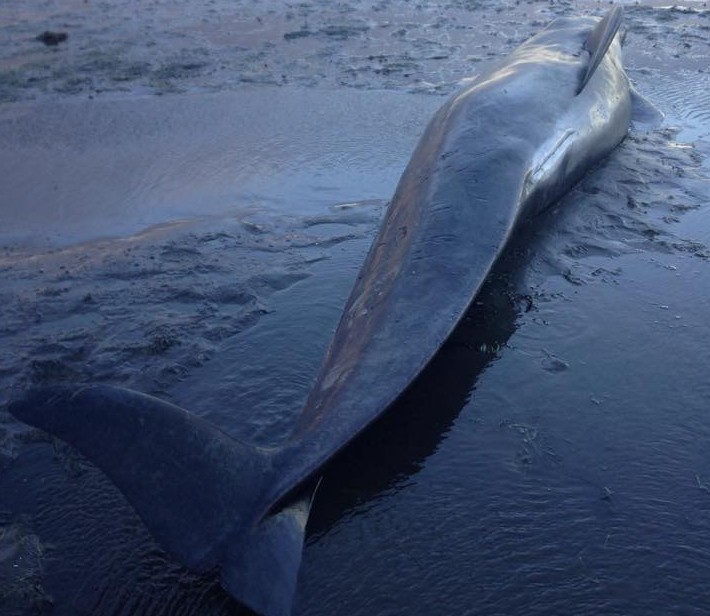Investigations led by the University of Aberdeen, in collaboration with the Scottish Marine Animal Stranding Scheme, have shown that a pod of whales stranded in Fife in 2012 had high concentrations of toxic chemicals, some of which had reached the mammals’ brains.
The pod of long-finned pilot whales they investigated were stranded on a beach between Anstruther and Pittenweem in Scotland, on September 12 2012.
Out of the 31 mammals which beached only 10 could be refloated and sixteen females and five males died.
Scientists found mercury at levels high enough to cause severe neurological damage in humans and demonstrated for the first time that the toxic element cadmium can cross the blood-brain barrier. Their report, published in the journal Science of the Total Environment, shows a clear correlation between the increased levels and the age of the mammals, suggesting toxic stress increases the longer the mammals live.
They say this could demonstrate that this species of marine mammal are less susceptible to mercury poisoning than humans, but that they cannot entirely discount the possibility that it is a factor leading to whales navigating off course.
Dr Eva Krupp, an environmental analytical chemist from the University of Aberdeen, collected and analysed samples from the whales together with PhD students Cornelius Brombach and Zuzana Gajdosechova.
She said: “We were able to gather an unprecedented number of tissue samples from all the major organs including the brain and as a result we can see for the first time the long term effects of mammalian exposure to the environmental pollutants.
“This pod of whales provides unique new insights because we were able to look at the effects on a large number of whales from the same pod and how this varied according to age.”
Analysis of samples revealed that the level of mercury in the whales increased in correlation to the age of the mammals, which ranged from under a year to 36 years.
They found very high concentrations of mercury in the brain of all the whales older than nine years and in three the concentration was higher than levels at which severe neurological damage would occur in humans.
“We can see clear evidence that mercury is being transported through the blood stream to all organs where it accumulates over the lifespan,” Dr Krupp added.
“As well as an increased concentration of mercury in the brain as the whales become older, we see a similar effect with cadmium, which has not been previously reported. It is known that cadmium can penetrate the blood brain barrier in the new-born or developmental stages but it was not thought to do so in adults. Our findings are significant because we can demonstrate for the first time that cadmium is in the brain tissue and that its levels increase with age.
“Although the body has a natural defence mechanism in the form of the element selenium, which detoxifies these harmful chemicals, we found that the majority of selenium is not available for the synthesis of essential proteins in older animals. This indicates that the longer mammals live, the less able they may be to cope with the toxic effects.”
Previous scientific studies have shown that mercury concentrations in the oceans have notably risen since the industrial revolution and through goldmining activities, which may in turn lead to an increase of mercury levels in marine mammals.
“So far, we have no indication that the mercury and cadmium levels in the brain cause disorientation, which in some cases can lead to strandings, but there is a potential for higher stress in these iconic animals due to rising toxic metal concentration in the oceans,” Dr Krupp added.
“More research is needed to investigate whether this is a factor in strandings, particularly where other explanations such as illness or weather events cannot be found.”
